Yesterday morning while searching for the scores of one composition that I had saved in the photo gallery of my phone, I saw a photo showing a board from one piano studio with a quote. It said:
The slower you go, the faster you will get there.
It sounds a bit absurd, as how you can arrive faster to a place if you go slowly. But, from my own experience of teaching, I exactly know what it means in music.
Some students don't have the patience to practice slowly, they want to play the piece fast, from the very beginning of learning it. They would not listen to suggestions to play it slowly and think about the notes, to analyze, to get it learned well. The piece (and my hearing) would suffer constant errors and missed notes, poor dynamics, and many times inaccurate rhythm. With time, there would be fewer errors, but still, it takes time to unlearn the mistakes and get the notes and the whole piece right. It could last for weeks.
On the other hand, if a student starts to learn the notes slowly, internalizing the musical text, with all the details already, although playing it slowly, the connections in the mind will develop well. After some time, the piece will be ready and mature enough to play it well and at the appropriate speed. Believe me, the process takes less time than trying to play it fast from the beginning, with mistakes.
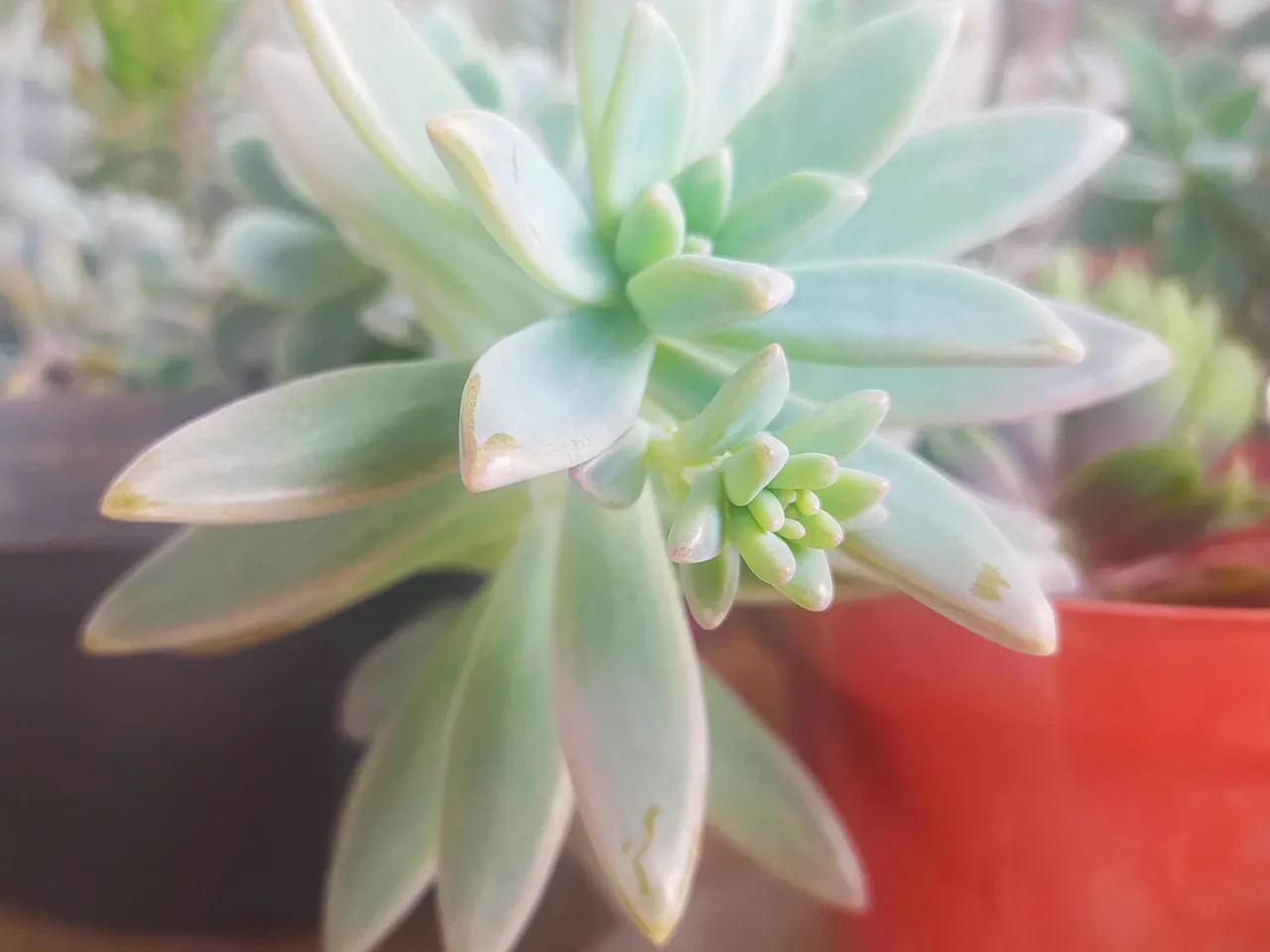
It is true for many other things too. Being patient and persistent and not wanting to do the tasks quickly, at once... as it happens to me when I need to treat my plants from plague or replant them. There are so many that I need several hours to do everything and you guess - we never have those several hours at once to dedicate it just to plants.
So, I postpone the "gardening" for some other day when I will have more time. And that day never arrives. 😂 Then I finally realize that it is better to do a small step for one or two plants, then next time another step. That way everyone can be happy - I don't get frustrated by many things at once and the plants survive at a higher rate!
Two big tasks were waiting to be fulfilled. To get rid of the aphids that attacked the Aeonium and to clean the leaves of the Aloe Vera (also from some plague). Plus to separate the new little plants that have grown around the big one.

The Aeonium got its turn a few weeks ago. I treated it with the liquid I made (1 litre of water with a teaspoon of dishwasher soap) and later showered it. I repeated the process a couple of days later and indeed, the aphids seemed to disappear, or at least there were a lot fewer.
I still have to repeat this thing as I see new aphids that enjoy the taste of my Aeonium.
Btw, this plant was a tiny small cutting I "obtained" from the street :D
It has grown a lot! With all my neglecting attitude, it is doing perfectly well!

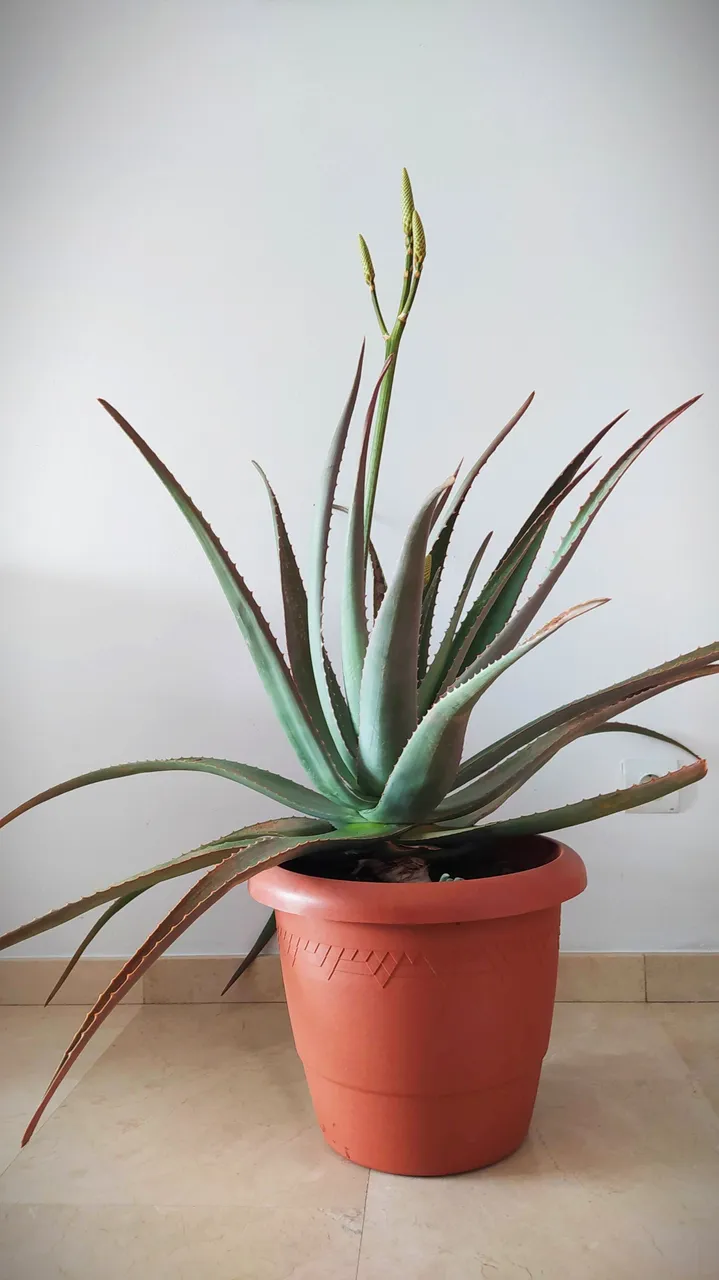
The Aloe Vera plant needed to be showered as well but it was not easy to carry this huge pot and big plant. But there is a trick I use to make this trip easy: I put it on a folded towel and easily drag it to the bathroom.
Before this, I saw many little Aloe plants growing from the soil, so I took them out. At the moment I don't know what to do with 16 new plants. They are on the waiting {thinking} period, still on the balcony. They can be without soil for a few days, nothing will happen to them.
The news is also that the big plant has two stems with buds. These buds will be the flowers that every year bloom around this time.
An interesting fact - did you know that the yellow flowers of Aloe Vera are edible?
In this little collage of photos, you can see the Aeonium, the Aloe Vera buds and the little plants, taken out from the soil:
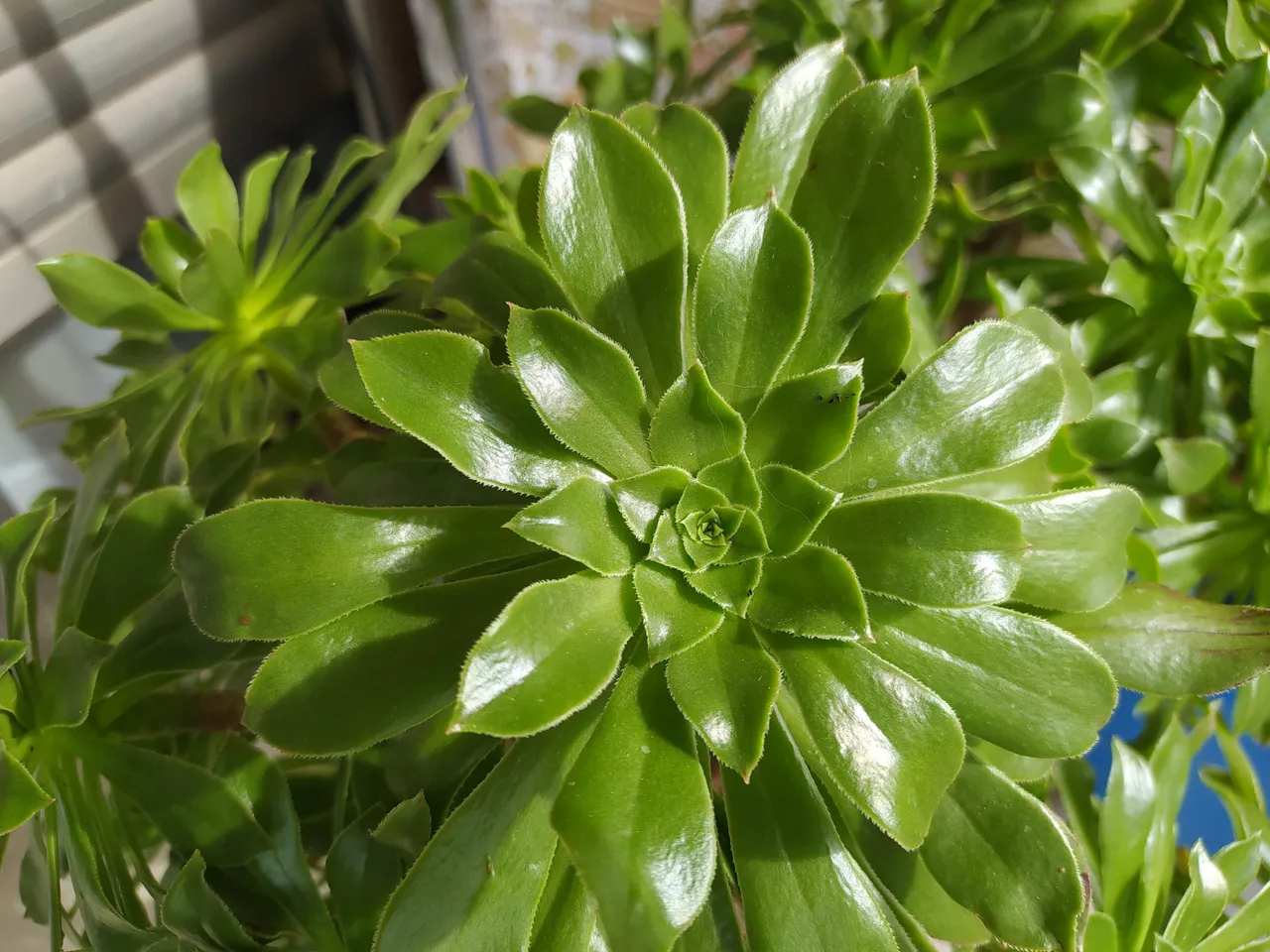
|

|
|---|---|
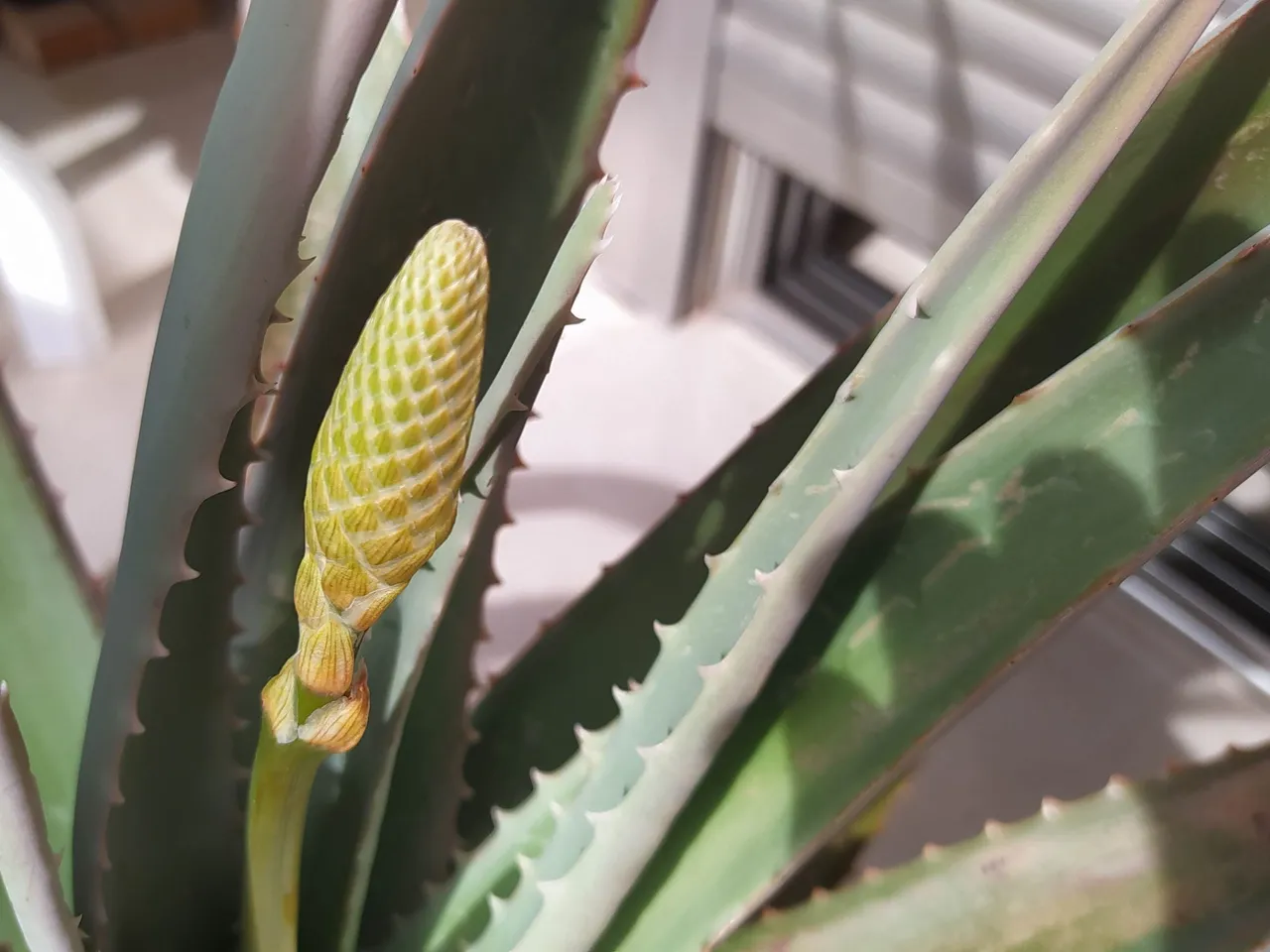
|
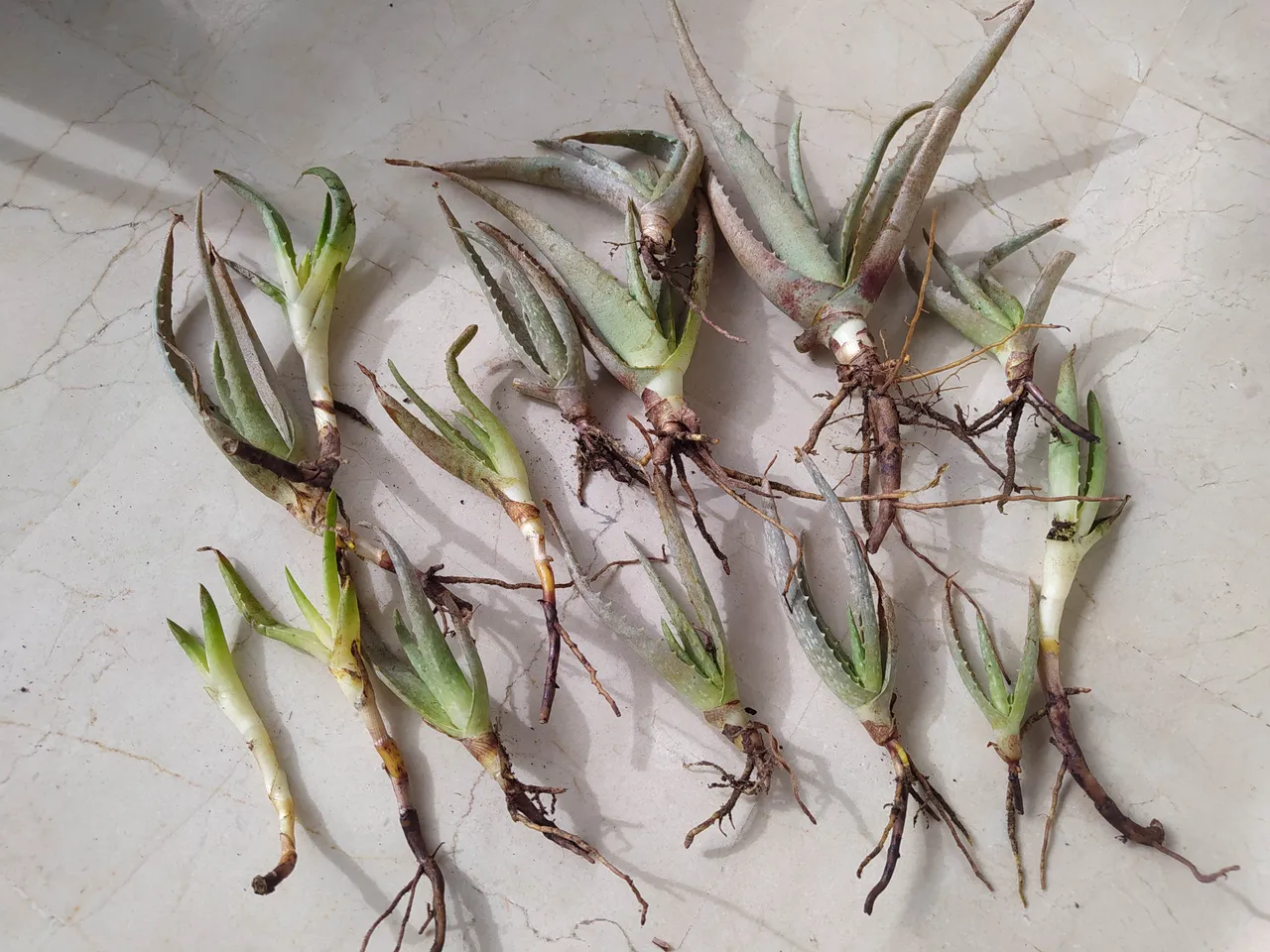
|

So, these were my yesterday gardening activities. Not too much, but something.
And you... how do you perform your gardening chores? Do you postpone these things and then dedicate one full day to your indoor or outdoor plants and do all the interventions they need?
Or do you divide the tasks into smaller steps - at a slower pace but then you actually get the work done quicker?
